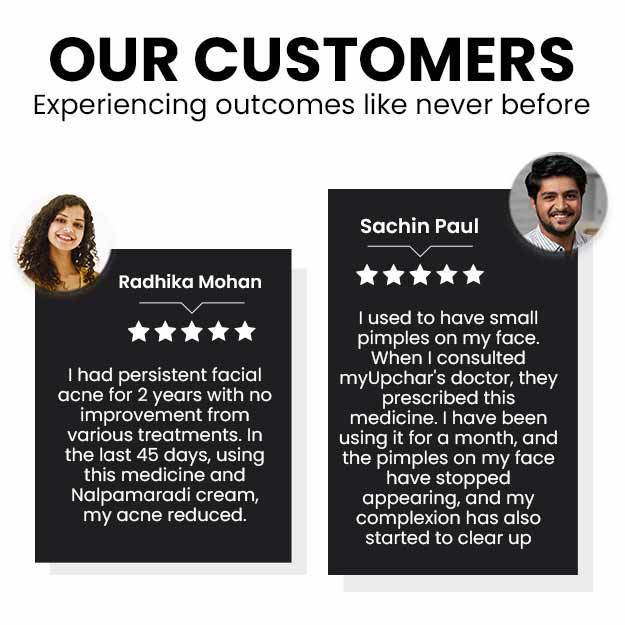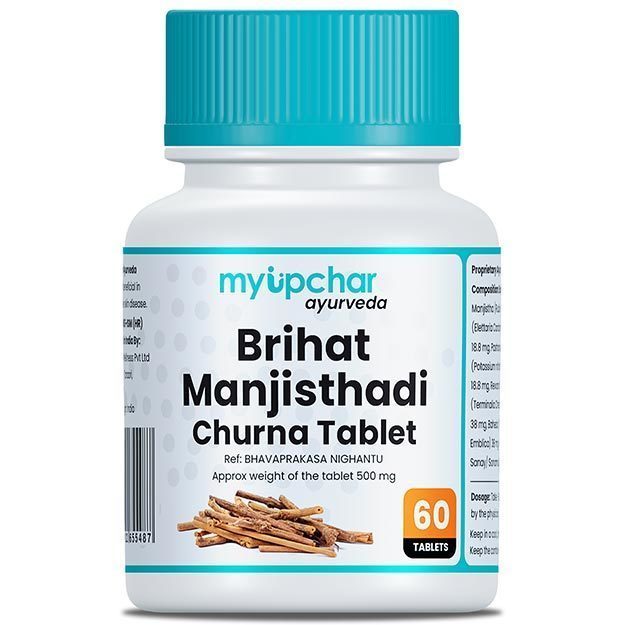Summary
An irritation on the breast skin is referred to as itchy breast. The itching may occur due to the presence of dirt on the skin, and cleaning the skin thoroughly helps get rid of the itch. However, there can be other causes of itchy breast, including fungal infections, bacterial infections, friction with clothing, hormonal changes, and cancer in rare cases. Itching may be accompanied by other symptoms, such as swelling and redness of the skin. After an appropriate diagnosis by clinical examination, treatment options, such as creams, gels, and antihistamines, may be considered to treat the itch. In addition, home remedies often prove to be effective in getting rid of the itch. Outcomes are usually good and complications are rare. Prevention involves wearing comfortable clothing, keeping the skin clean and well hydrated, controlling sweat and infections by maintaining personal hygiene.
- What is an itchy breast
- Symptoms of itchy breast
- Itchy breast causes and risk factors
- Itchy breast prevention
- Diagnosis of itchy breast
- Treatment of itchy breast
- Home remedies for itchy breast
- Itchy breast prognosis and complications
What is an itchy breast
An itchy breast refers to an irritation on the breast skin, which may also result in rashes and redness of the skin. It is a fairly common occurrence in women and men, though it is more frequently experienced by women.
Mild itching in the breasts, which self-resolves within a few minutes, is not usually a matter of concern. However, frequent itching tends to be uncomfortable and can be socially embarrassing. If there is a more serious cause to the itching, it will be accompanied by other symptoms that may help determine the cause better.
Symptoms of itchy breast
The general symptoms that accompany itchy breasts are as follows:
- Irritation over the breast and nipple area.
- Redness due to inflammation.
- Rashes
- Tiny blisters
- Tingling sensation.
- Feeling of a constant need to scratch.
If there is an underlying cause that leads to itching in the breast, other symptoms of that condition may also appear.
In case of a fungal infection, the itching may be accompanied by
- Rashes under the breast.
- Flaking of the skin.
- White blisters on the affected area.
These symptoms may not just be restricted to the breast and may appear on different parts of the body as well.
If the underlying cause is breast cancer, then itchy breast may be accompanied by other symptoms, such as:
- Swelling
- Thickened skin
- Lump in the breast or under the nipple
- Pain
- Tenderness
- Abnormal discharge from the nipple
- Feeling of warmth in the area
- Changes in the nipple size, position, and appearance
(Read more: Breast cancer in men symptoms)
Itchy breast causes and risk factors
Causes
The most common causes of itchy breasts are presented below:
- Contact Dermatitis
Contact dermatitis is a skin condition that leads to intense itching. It is often a result of sensitivity to certain substances that cause inflammation and irritation to the skin. Exposure to certain cosmetics, perfumes, creams, or cloth materials could cause contact dermatitis. The rashes may be accompanied by tenderness in the area and crusting of the skin or the skin becoming scaly and dry. (Read more: Dry skin causes) - Jogger’s Nipple
During sports activity, constant rubbing of the skin against rough clothing or undergarment can cause chafing of the nipple and the surrounding skin. This is often known as jogger’s nipple and causes mild itching and inflammation. It is usually resolved by using moisturizers and wearing the right sportswear made of softer materials like cotton. - Atopic Dermatitis
Atopic dermatitis, also known as eczema, can cause itchy breasts in women of all ages. Dry skin, exposure to allergens, and stress can cause eczema flare-ups. Friction may also cause itching. - Fungal Infection
Fungal infections caused by Candida species can lead to itching, particularly on and around the nipples. Candida tends to grow in the folds of the skin where sweat often gets collected. The presence of heat and moisture leads to its rapid growth. Symptoms, such as dryness, inflammation, redness, and formation of small blisters may also develop due to a Candida infection. A fungal infection can also lead to itching on other areas of the body e.g. groins, armpits, under the breasts among others. - Paget’s Disease
Paget's disease of the nipple is a rare form of breast cancer. It affects the nipple and the surrounding skin. Although this disease occurs mostly in women, it can also occur in men. One of its primary symptoms is itching in the affected area. It also leads to flaking of the skin on or around the nipple, causing redness and tenderness. - Hormonal Changes
Hormonal changes before the monthly period can cause itching in the breasts since the breasts may grow slightly bigger around that time of the cycle. Hormonal changes during menopause also cause itching in the breasts. Itching due to hormonal changes resolves rapidly and does not cause any significant discomfort. - Inflammatory Breast Cancer
In the case of a tumour, the skin over the affected area may turn red and tender. Hence, there may be itching and inflammation occurring in patches over the breast skin. However, itching tends to be a rare symptom of breast cancer. If it occurs along with other prominent symptoms, such as discharge from the nipple and growth of a lump, immediate medical attention is required. - Pregnancy
Itching in the breasts and soreness in the nipples are commonly experienced by pregnant women. This is related to hormonal changes and breast sensitivity during pregnancy. Women who are breastfeeding may also experience itching in the nipples, which may make breastfeeding slightly difficult and uncomfortable. - Breast Abscess
A breast abscess is an uncommon bacterial infection that occurs when the bacteria enter the breast through the skin. This may be commonly seen in women who are breastfeeding. Any kind of injury to the skin tissue, such as a piercing, can also result in a bacterial infection, which not only leads to itching in the breasts but also leads to the formation of a cavity in the breast that is filled with pus or fluid. - Mastitis
Mastitis is an inflammation or swelling of the tissues in the breast and is commonly seen in women who are breastfeeding. The stagnant milk in the duct creates a blockage, which may lead to bacterial growth. This infection can cause rashes, itching, and fever. - Mammary Duct Ectasia
It is a rare condition in which the milk ducts tend to thicken and dilate to become bigger. This may cause discharge from the nipple and milk build-up if it gets blocked. This leads to itching that is perceived to be originating from the inside of the breast.
Skin conditions like psoriasis that can affect any area of the skin can affect the breasts too causing itching, scaling and redness.
Risk factors
The factors that may predispose one to itchy breasts are multiple. These include:
- Women and men who are active athletes are more likely to experience itching.
- Individuals practising poor hygiene are also more vulnerable to developing an itch due to fungal or bacterial infections.
- Pregnant and breastfeeding women are more likely to experience itching in the breasts.
- Young girls in their early teens are also prone to experience itching in the breast, as their bodies are growing and undergoing hormonal changes.
- People with sensitive skin or with skin diseases may react to allergens. Thus, they are also at a higher risk of developing itching over breasts. (Read more: Skin allergy symptoms)
Itchy breast prevention
A few preventive measures can be followed to avoid itchy breasts, such as:
- Wear proper sports underwear/bra while exercising with cotton lining to absorb sweat. Wear loose cotton clothing. Avoid wearing synthetic fabrics that trap heat and moisture.
- Keep your skin hydrated and moisturised, especially during the winter season.
- Use a calamine lotion to soothe the itch as soon as it begins to present.
- Wait for the skin to dry before you put on any clothes.
- Keep your skin clean.
- Avoid using perfumes and deodorants directly on the skin.
- Avoid using skincare products that are harsh on the skin.
Diagnosis of itchy breast
Doctors usually diagnosis itching on the breast based on the woman’s description of the symptoms. A physical examination often proves to be helpful in determining the cause of itching. Most commonly, the symptoms and skin changes are enough for the doctor to identify a fungal infection, which is one of the most common causes of itching over breasts. In extremely rare cases, the health care provider may take a skin sample for further testing.
- Blood tests may be done if the doctor suspects something more serious to determine the blood sugar level or the white blood cell count. This helps trace any underlying infection. However, this is not needed in most cases.
- Diagnostic tests, such as a mammogram (X-ray of the breasts), ultrasound, an MRI scan, or biopsy (taking a small piece of skin tissue for testing), may be conducted to rule out the possibility of breast cancer. (Read more: Breast cancer surgery)
Treatment of itchy breast
Doctors prescribe the following for the treatment of itchy breasts:
- Topical Creams
Creams or gels meant to be applied on the surface of the affected area usually contain medicine to suppress the itch and inflammation. These creams may also have antibacterial and antifungal agents to treat the infection. - Antihistamines
Antihistamines are helpful in reducing the itching due to an allergic reaction to an environmental allergen. Antihistamines may be consumed orally or administered through injections for quick relief. Although such medications may be easily available in the local pharmacies, it is not advised to take them without consultation with a doctor.
It is also important to remember that the treatment for an itchy breast largely depends upon the cause. While itching caused due to skin conditions or temporary health conditions, such as hormonal changes, require minimal treatment, causes such as cancer or other diseases require a different approach to treatment, mainly surgery, chemotherapy, or radiation therapy.
Lifestyle management
Here are a few lifestyle management tips that can help in reducing itching in breasts:
- Keep track of any allergens that may be causing itching and inflammation. Identifying these allergens can be a useful preventive measure.
- Use mild soaps while washing the affected skin. Avoid using soaps that are scented and cause dryness of the skin. Use of hypoallergenic washes can be helpful in soothing the irritated skin and reducing the reaction to any allergen as well.
- Use a lotion to curtail skin dryness.
Home remedies for itchy breast
The following are some home remedies for itchy breasts:
Coconut oil for breast itching
How to use
Apply a teaspoon of coconut oil liberally over your breasts two to three times a day. It is recommended to use pure coconut oil that does not have any added fragrances. The oil can be applied immediately after bathing so that it gets absorbed into the skin well.
Benefits
Coconut oil is a safe and excellent choice for soothing inflammation and itching. It has antifungal and antibacterial properties and helps to soothe dry skin as well.
Tea tree oil for itchy breast
How to use
To use tea tree oil, add a few drops of it to a teaspoon of coconut oil. Mix well and apply on the affected areas. Do not apply tea tree essential oil directly to the skin. Apply the oil mixture at least twice a day.
Benefits
Tea tree oil has antibacterial and antifungal properties. Thus, it prevents itching and infections.
Aloe vera benefits for itchy breast
How to use
Simply apply some cold aloe vera gel to the affected area and massage gently till the gel gets absorbed. Use the gel at least two-three times a day.
Benefits
Aloe vera gel has skin-soothing properties. It helps in reducing skin itching and in hydrating dry skin. Aloe vera gel is suitable for sensitive skin as well.
Oatmeal for itchy breast
How to use
Add 1-2 cups of oatmeal to your bath and soak in the water for 10-15 minutes. You can also prepare an oatmeal paste, apply it to the affected areas, and rinse it off with lukewarm water after 15 minutes.
Benefits
Oatmeal bath and oatmeal pastes are often used for providing relief from inflammation due to eczema. Using oatmeal as a remedy helps soothe inflammation and reduce redness. It also prevents further itching.
(Read more: Oats health benefits)
Baking soda for itchy breast
How to use
Add 3-4 tablespoons of baking soda to your bathing water and use it once every day to clean the affected skin. If preparing a solution just for treating itchy breasts, then add one teaspoon of baking soda to two cups of water and rinse the affected area with it.
Benefits
Baking soda helps in reducing inflammation and eliminating bacteria.
Itchy breast prognosis and complications
Prognosis
Outcomes of itchy breasts are excellent with extremely rare complications or worsening of the condition. Rapid diagnosis and treatment are sufficient to resolve the condition.
Complications
No significant complication is associated with itching in the breast. However, if present for a long duration and along with other symptoms, it must not be ignored. Timely diagnosis of the cause can help in administering effective treatment.
Constant and aggressive scratching of the skin to soothe the itch can cause bleeding and skin rashes. Thickening of the skin, called lichenification, may occur due to persistent itching, turning the skin dark.
References
- MedlinePlus Medical Encyclopedia: US National Library of Medicine; Candida infection of the skin
- National Cancer Institute [Internet]. Bethesda (MD): U.S. Department of Health and Human Services; Breast fact sheet
- National Health Service [Internet]. UK; Breast abscess.
- American Cancer Society [Internet] Atlanta, Georgia, U.S; Duct Ectasia.
- National Cancer Institute [Internet]. Bethesda (MD): U.S. Department of Health and Human Services; Breast Changes and Conditions
- Infant and Young Child Feeding: Model Chapter for Textbooks for Medical Students and Allied Health Professionals. Geneva: World Health Organization; 2009. SESSION 7, Management of breast conditions and other breastfeeding difficulties.
- National Cancer Institute [Internet]. Bethesda (MD): U.S. Department of Health and Human Services; Paget Disease of the Breast













































